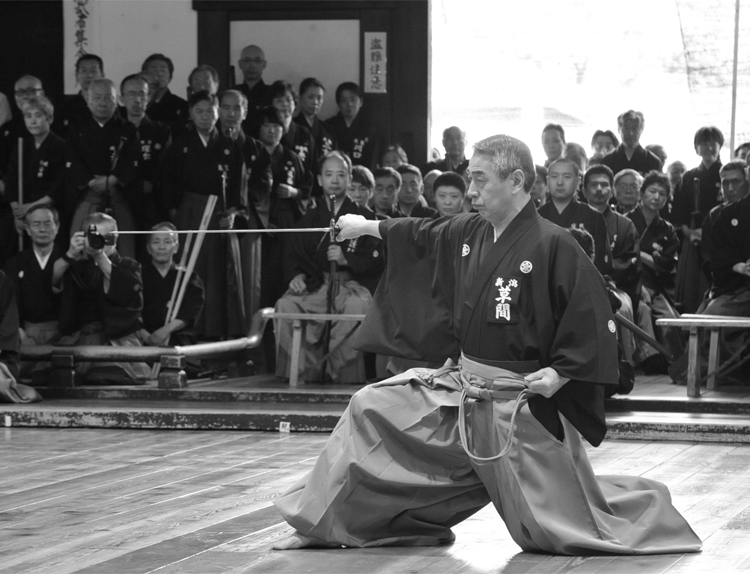Iaido (Quick-Draw Sword Art or more commonly known as Japanese Swordsmanship) was developed as a defensive method to counter surprise attacks in 15th and 16th century Japan.
The purpose of Iaido was to slay an opponent with one stroke of the sword immediately after unsheathing it. In order to create such a defensive system, situations and circumstances of surprise attacks were studied to devise a systemized way to utilize the sword efficiently against many forms of attack.
What is Iaido?
Iaido is a method of wielding the katana, which has been practiced from ancient times until present day. The ‘i’ in Iaido refers both to the existence of the body and that of the spirit. The ‘ai’ refers to adaptability, the impromptu execution of movements whenever and wherever an appropriate response is necessary. The do refers to the path or way taken by its practitioners.
The practice of Iaido requires a calm spirit, extreme concentration and skill. Every motion, such as the movements of the arms or legs and body, must be perfectly coordinated.
The physical practice of Iaido includes drawing, parrying and cutting motions, as well as various methods of returning the sword to the scabbard. Training focuses on Kata, pre-arranged forms that are designed as defenses against an imaginary opponent, and each form teaches several principles of correct sword handling.

Institute of Budo Studies Iaido Curriculum
Muso Jikiden Eishin Ryu
Muso Jikiden Eishin Ryu is one of the most widely practiced schools of iai in the world. Often referred to simply as “Eishin Ryu,” it claims an unbroken lineage dating back from the sixteenth century to early 20th century. The school takes its name from its seventh headmaster, Hasegawa Chikaranosuke Hidenobu, who had founded Hasegawa Eishin Ryu. ‘Muso Jikiden Eishin Ryu’ means ‘peerless, directly transmitted school of Eishin.’ ‘Eishin’ is an alternative pronunciation of ‘Hidenobu.’
Muso Shinden Ryu
Muso Shinden Ryu was founded by Nakayama Hakudo in 1932. Nakayama Hakudo studied under both Hosokawa Yoshimasa, a master of the Shimomura branch of Hasegawa Eishin Ryu, and Morimoto Tokumi, a fellow student of Oe Masamichi of the Tanimura branch. The name Muso Shinden Ryu most likely comes from the name given to the Shimomura branch by Hosokawa, Muso Shinden Eishin Ryu.
Zen Nippon Kendo Renmei Seitei Iai
Zen Nippon Kendo Renmei Seitei Iai was developed by the All Japan Kendo Federation (AJKF, Zen Nippon Kendo Renmei or ZNKR). This style of standardized iaido is also known as Seitei Iai or Zen Ken Ren Iai. The twelve seitei-gata are standardized for the tuition, promotion and propagation of iaido within the kendo federations. Although not all kendo dojo teach seitei iaido, the AJKF uses them as a standard for their exams and championships. As a result, seitei iaido has become the most widely recognized form of iaido in Japan and the rest of the world.
